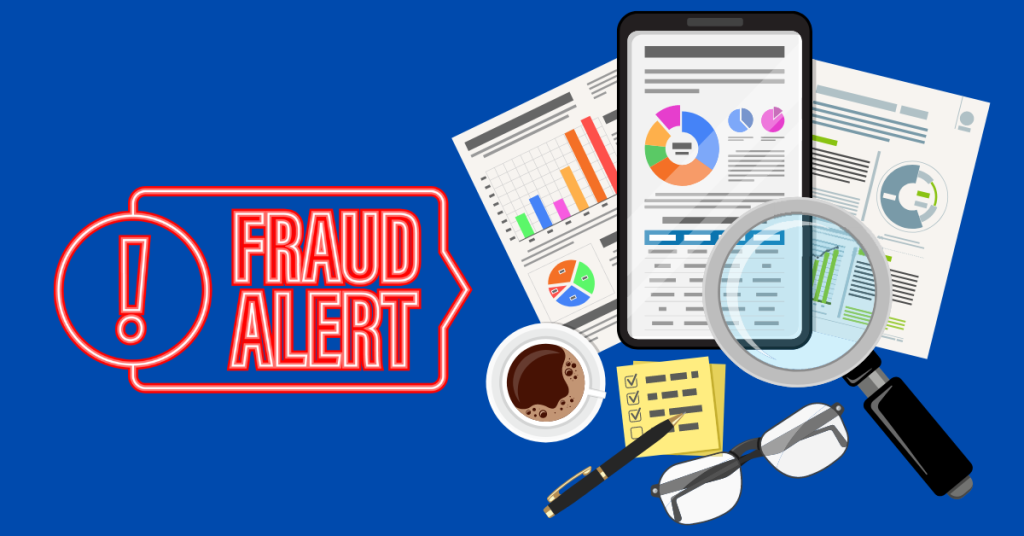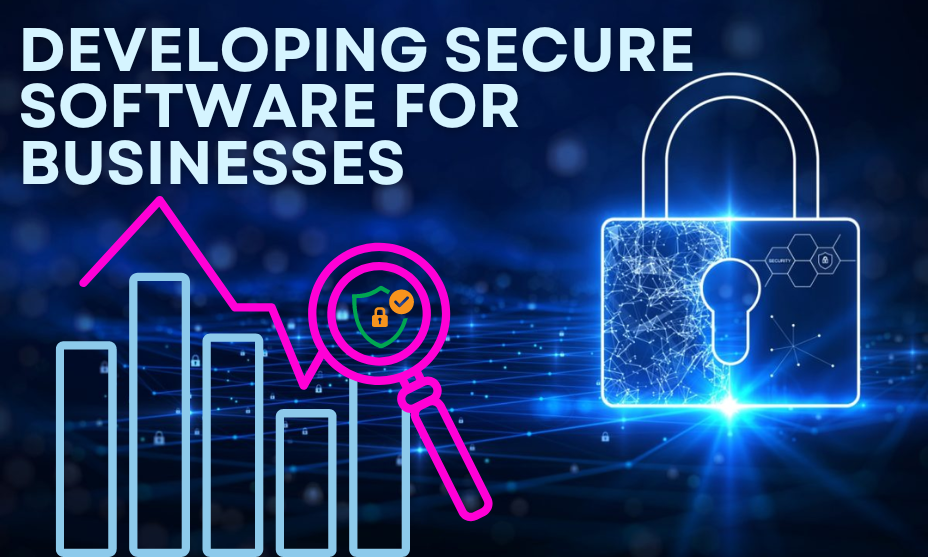Tips For Developing Secure Software For Businesses
Businesses rely on software to run operations, store and transmit data, and provide customer services. If you’re an entrepreneur with a small business, you probably know how important it is to find the best way for your business to grow. While some aspects of running a business can be easy, others are more difficult than you think. One such challenge is making sure that the software developed for your company remains secure from hackers and other nefarious individuals who might want to steal sensitive information from you or damage things like hardware.
The Importance Of Security
In today’s digital world, businesses increasingly rely on security software solutions to protect their sensitive data and systems from malicious attacks. With the potential for data breaches and other security threats, having secure software is critical for businesses of all sizes.
Secure software helps protect businesses from cybercriminals and other malicious actors, reducing the chances of data loss or exposure to sensitive information.
Secure software also allows companies to maintain compliance with regulations and industry standards, such as those set by the Payment Card Industry Data Security Standard (PCI DSS). Additionally, it can help businesses maintain customer trust by ensuring that their data is kept safe and secure.
Train Your Employees In Security Best Practices
Employees are the first line of defense for ensuring software security. To provide your software is as secure as possible, training your employees on best practices for keeping data safe is essential. It includes educating them on the dangers of phishing emails, not sharing passwords, and being aware of any suspicious activity.
You should also ensure your employees understand the importance of creating strong passwords and using two-factor authentication whenever possible. Educate your employees on spotting potential security threats and what to do if they suspect their accounts have been compromised. Finally, provide regular security training sessions for your team to stay up-to-date on the latest threats and best practices. By training your employees in security best practices, you can ensure that your software remains secure and protected against malicious attacks.
Use Strong Passwords And Two-Factor Authentication
Strong passwords are essential to secure software. Passwords should be unique, with at least eight characters, and contain a combination of upper and lowercase letters, numbers, and special symbols. It’s also essential to update passwords regularly.
Two-factor authentication is another way to add an extra layer of security for users. With two-factor authentication, users must provide two pieces of information: a password and a code sent to their email or phone. It helps to protect against unauthorized access to accounts even if the password has been compromised. Consider regular password changes so that old passwords can’t be reused and increase security further. Encryption is another essential tool for developing secure software; authorized personnel can only access data with the proper encryption key. Implement firewalls and intrusion detection systems to prevent unauthorized access from outside sources and detect suspicious activity on your network. Use IP allows listing so that only specific IP addresses have access to your system, making it harder for intruders to get in.
Encrypt Your Data
Data encryption is a critical step in securing your business’s software. Encryption scrambles the stored and transmitted data so that it cannot be easily read or intercepted. When properly implemented, it prevents unauthorized users from accessing confidential data. When you encrypt your data, you create an additional layer of protection for sensitive information. The most commonly used type of encryption is called symmetric encryption, which uses the same key for encryption and decryption. It means that if someone has access to the legend, they can decrypt the data.
Asymmetric encryption, also known as public-key cryptography, uses two keys for encryption and decryption, making it much more secure. Choosing a robust encryption algorithm and using a vital encryption key is essential when encrypting your data. It’s also important to store your encryption key in a secure location, such as a hardware security module or HSM. It would help if you also considered using a certificate authority to issue digital certificates to identify each computer in your network securely.
Use A Secure Server
Having a secure server is an essential part of ensuring the safety of your business’s data. When you use a secure server, all data transmitted to and from the server is encrypted, making it much harder for hackers to gain access. Furthermore, a secure server should have safeguards that restrict access to only authorized personnel, protecting against unauthorized access.
When choosing a secure server, it’s essential to look for one that meets industry standards for security and has features such as firewalls and anti-virus software.
Additionally, ensure that the server has an uptime of at least 99%, meaning that it should be available virtually all the time. Finally, ensure the server has a reliable backup system in case of any unexpected downtime. A secure server can provide significant peace of mind that your business’s data is safe and secure. It also reduces the risk of data breaches or other security incidents. As such, it’s essential to any successful business’s security strategy.
Perform Regular Security Audits

Security audits are an essential part of protecting your business from cyber threats. Audits help identify weaknesses and vulnerabilities in your systems that hackers and malware can exploit. Regular security audits should be part of your software development process and include manual and automated tests. Manual testing should include a code review and configuration to ensure secure coding practices are followed. Automated testing can involve scanning applications, databases, and networks for possible security issues.
Security audits should also include penetration testing, which attempts to access restricted data and resources by exploiting existing system vulnerabilities. Regular security reviews should be conducted to determine if any environmental changes have created new vulnerabilities. It includes reviewing access controls, user accounts, system configurations, and other security-related settings.
Reviewing audit logs for suspicious activity that could indicate a potential breach or attack on your systems is also essential. By performing regular security audits, you can help identify potential threats before they become a problem. This proactive approach can go a long way in protecting your business from data breaches and cyber threats.
Use Bug Bounty Programs
Bug bounty programs are an effective way to identify and address any potential vulnerabilities in your software. A bug bounty program is a crowdsourced approach to finding and fixing bugs and security holes in your software. Companies typically reward anyone who finds and reports a vulnerability, so it’s a win-win for the company and the user.
When setting up a bug bounty program, set clear criteria for what kind of bugs you’re looking for and how much you’ll pay for each report. It will help you create a good relationship with bug hunters and incentivize them to find and report any issues. It also helps weed out false positives and gives you more control over which says you want to follow up on.
The rewards you offer will also be vital as they determine how seriously the bounty hunters take your program. Ensure you’re offering competitive rates for their efforts, and you’ll be more likely to get the best results from your bug bounty program.
Bug bounty programs can effectively identify and address any potential vulnerabilities in your software. As long as you set up the schedule correctly, it can be an invaluable asset for helping to keep your software secure and reliable.
Keep Your Software Up To Date
Keeping your software up to date is one of the most critical steps in developing secure software for businesses. Outdated software can be a significant security risk as it may be more vulnerable to malicious attacks. Software updates often include new security features and bug fixes that make your software more secure. You can protect yourself from potential threats by keeping your software up to date. Additionally, updating regularly can help you stay compliant with industry regulations.
It is essential to have a system to keep track of software updates and ensure they are installed as soon as possible. Set up automated update reminders or outsource your software update process to a third-party provider. It will ensure that you are always running the most up-to-date version of your software. Additionally, creating regular backups of your data is essential in case something goes wrong with an update.
By keeping your software up to date, you can rest assured that your business is protected from potential threats. Taking the necessary steps to keep your software secure will go a long way in ensuring the safety and security of your business.
Conclusion
Security is critical to software development and should not be taken lightly. Secure software development requires attention to detail and constant vigilance for potential vulnerabilities. To ensure the security of their applications, businesses should follow a secure software development lifecycle that includes setting security objectives, applying certain coding practices, testing, and verification.





